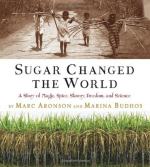|
This section contains 319 words (approx. 1 page at 400 words per page) |

|
Indus River
Now located in Pakistan, the Indus River is where Alexander the Great's men got tired of fighting. They refused to go on.
Sweet Reed
A close friend of Alexander the Great discovered a sweet reed as he explored. It was a tall stalk that resembled bamboo. The inside was sweet.
New Guinea
Cane sugar can be traced back to New Guinea.
Jundi Shapur
Jundi Shapur was built sometime between 400 and 500 A.D. in the area we now know as Iran. It was the first teaching hospital in the world.
Plantation
Plantation life was a type of farming where large numbers of people worked together to grow, cut, refine, and process sugar cane.
Slaves
Slaves were used to work a plantation. The work was often brutal. The first ones were mostly from Russia and others were from places such as Africa.
Barbados
Many Africans were brought to...
|
This section contains 319 words (approx. 1 page at 400 words per page) |

|




